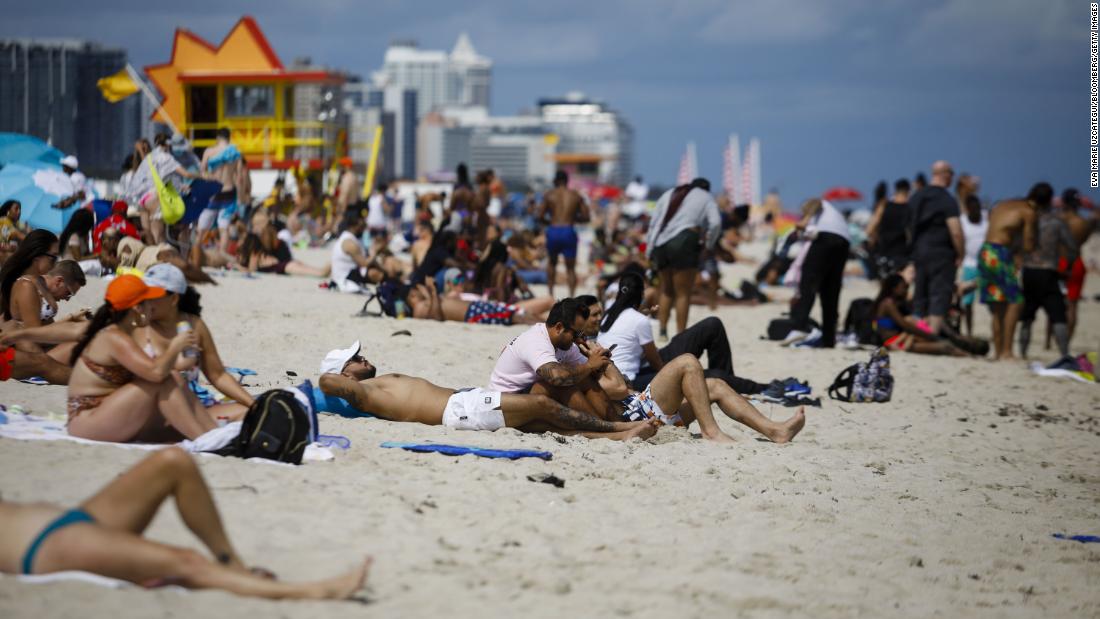“Four weeks ago, variant B.1.1.7 was responsible for about 1 to 4% of the virus that we saw in communities across the country. Today it is 30 to 40%,” said Osterholm, who is the director of the Center. for Infectious Disease Research and Policy at the University of Minnesota, told NBC’s “Meet the Press” program on Sunday.
“What we saw in Europe, when we hit the 50% mark, we see an increase in cases,” he said.
Here’s what we know about variant B.1.1.7
Although there are multiple variants of the coronavirus circulating in the United States, experts have been particularly concerned with the dangerous potential of the highly contagious variant B.1.1.7.
So far, the agency has reported more than 2,600 known cases of the variant in 46 states, Puerto Rico and Washington DC. Almost a quarter of these cases occur in Florida. But the CDC said that this probably does not represent the total number of such cases in the United States – but only those that were found through positive sample analysis, with the help of genomic sequencing.
Infectious disease specialist and epidemiologist Dr. Celine Gounder told CNN on Sunday that she was at an emergency meeting with a group of experts held on Christmas Eve to discuss the variant.
“We have been monitoring very closely since then,” she said. “Where it hit the UK and now elsewhere in Europe, it was really catastrophic. It has increased hospitalization and death rates and is very difficult to control.”
“It is as if we are running a long marathon, we are 100 meters from the finish line and we sit down and give up,” said Gounder on Sunday. “We are almost there, we just need to give ourselves a little more time to get a larger proportion of the population to be covered with vaccines”.
‘It’s not just about personal choice’
On Sunday, Reeves defended his decision, saying that trying to totally rid the state of Covid-19 cases would be an unrealistic goal, and that the numbers of concerned Covid-19 have declined.
“We look much more closely from a hospital data point of view, number of Mississippians in the ICU, number of Mississippians in ventilators … all of those numbers have plummeted in our state in the past two months,” he told CNN.
Reeves said the state tried to protect lives “but also to protect livelihoods”.
“We need to get our economy rolling so that people can get back to work, and I think that is extremely important,” he said.
And even without a mask mandate, the governor said he “strongly” recommends and encourages residents to wear masks.
Dr. Ashish Jha, dean of the Brown University School of Public Health, told ABC that the thing responsible for states is to keep the mask mandates in place.
“It is not just a personal choice, right, it is as if I drank and sat at the wheel of a car, it is not just a personal choice that would be putting my life at risk, I would be putting others at people’s lives is at risk” said Jha.
“When you wear a mask, you are not just protecting yourself, you are protecting the people around you,” he added.
Less than 10% of Americans fully vaccinated
More than 30.6 million received two doses, the data show. That is about 9.2% of the US population.
But officials are hopeful that vaccines will continue to increase in the coming months with the help of increased supply.
“We will have enough vaccines, I think we said to 300 million Americans,” said Slavitt on Sunday. “There are 250 million adults in the country now, and now, as we know, most teenagers are not eligible, and younger children are not eligible, so it is more than enough for each adult.”
Slavitt added that vaccines are now moving from factories to weapons “very, very quickly” and that the country is becoming more efficient in administering doses.
And high school students in the country can be vaccinated by autumn, according to Fauci, while younger students are likely to have to wait a little longer.
“At the moment, tests are being done to determine safety and comparable immunogenicity in high school students,” Fauci told CBS’s “Face the Nation” program on Sunday. “We project that high school students will most likely be able to be vaccinated by autumn, perhaps not on the first day, but certainly in the first part of autumn for this educational semester.”
CNN’s Nadia Kounang, Naomi Thomas and Artemis Moshtaghian contributed to this report.
